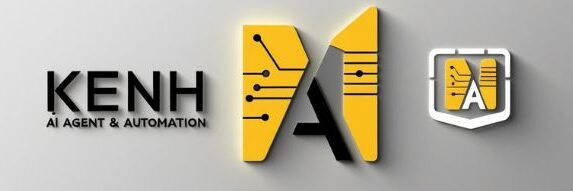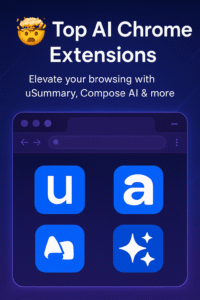Government and AI: Top 3 Policy Changes in 2025
Meta Description:
Explore the top 3 AI policy changes governments are enforcing in 2025, focusing on AI Agents, AI Workflows, and the MCP framework. Discover how these regulations are shaping the future of smart automation.
Introduction: Governments Are Stepping In
Artificial Intelligence (AI) is reshaping not just businesses, but also national policies. In 2025, as AI adoption surges across industries, governments worldwide are racing to regulate and guide its responsible development.
Key policy changes are directly influencing:
The deployment of AI Agents
The design of AI Workflows
The implementation of the MCP (Multi-agent Collaborative Process) framework
These shifts will redefine how companies, public sectors, and individuals interact with AI-driven systems.
👉 Discover Smart AI Solutions Today:
https://magiclight.ai/official-website?code=l9nbbe87y
1. The Rise of AI Agents: Governments Are Setting New Rules
What Are AI Agents?
AI Agents are autonomous systems capable of decision-making and performing complex tasks without human supervision. They are increasingly used to:
Automate workflows
Analyze large datasets
Communicate with users via chatbots and virtual assistants
Government’s New Focus: AI Agent Accountability
In 2025, governments are introducing new regulations to hold AI Agents accountable. These focus on:
Transparency: AI Agents must disclose when users are interacting with a non-human system.
Traceability: Decision-making logs must be accessible for audits.
Human Oversight: Critical decisions (such as healthcare or financial approvals) require human review, even if recommended by AI Agents.
Why This Matters
Without oversight, AI Agents could:
Amplify biases
Make opaque decisions
Cause unintended harm
Governments aim to balance innovation with consumer protection by introducing these transparency and accountability mandates.
2. Workflow Automation: Governments Tighten Data Governance
What Is an AI Workflow?
AI Workflows are automated sequences where AI Agents manage tasks such as:
Processing government applications
Managing public services
Conducting fraud detection
New Policy: Stricter Data Privacy in Automated Workflows
In 2025, new data governance policies are being introduced to regulate AI Workflows:
Explicit User Consent: Users must consent to their data being processed in AI-driven workflows.
Data Localization: Certain countries now require personal data to be stored and processed within national borders.
Automated Decision Review: Governments are mandating that automated decisions (like loan approvals or visa processing) can be contested and reviewed by a human.
Example: Public Sector Automation
Governments using AI Workflows to manage healthcare, taxation, or social services must now:
Prove that citizen data is securely handled
Allow citizens to appeal AI-made decisions
Why This Is a Game-Changer
These policies force companies and public entities to:
Design AI Workflows with built-in human checkpoints
Prioritize ethical data handling
3. MCP Framework: Regulating Multi-Agent Collaboration
What Is MCP (Multi-agent Collaborative Process)?
The MCP Framework is a system where multiple AI Agents collaborate to:
Share tasks in real time
Optimize workflows
Make interconnected decisions
New Government Priority: Regulating Multi-Agent Systems
In 2025, governments are introducing:
Safety Certification for MCP Systems: Any multi-agent system must pass safety and compliance checks before deployment.
Explainability Standards: AI systems using MCP must be able to explain how and why decisions were made.
Risk Mitigation Policies: MCP workflows must be designed to prevent systemic errors caused by multi-agent coordination failures.
Example: Smart Cities and Multi-Agent Collaboration
When MCP-powered AI manages:
Traffic systems
Energy grids
Emergency response
Governments now require:
Full visibility into agent collaboration
Strict fallback mechanisms to prevent cascading failures
Why MCP Regulation Matters
MCP-powered systems can control critical infrastructure. If not carefully managed, multi-agent coordination failures could have large-scale consequences.
Key AI Tools Supporting Regulatory Compliance
Claude AI: The Compliance Communication Leader
Claude AI is being used to:
Draft regulatory disclosures
Generate compliance documentation
Automate public communication about AI workflows
Role in AI Governance:
Claude AI can instantly provide user-friendly explanations when a citizen interacts with an AI-driven government system.
GPT-4.5: The Policy Analysis Engine
GPT-4.5 is used to:
Analyze policy texts and translate them into technical implementation plans
Support AI developers in creating compliant workflows
Predict policy changes based on legislative trends
Role in AI Governance:
GPT-4.5 helps ensure that AI-driven workflows and agents align with rapidly evolving government regulations.
AutoGPT: The Workflow and Compliance Orchestrator
AutoGPT:
Automates the integration of compliance checkpoints into AI Workflows
Coordinates human-in-the-loop approvals when required
Monitors system logs for traceability and audit-readiness
Role in AI Governance:
AutoGPT ensures that AI Workflows and MCP systems can quickly adapt to changing regulatory requirements.
Real-World Examples: Governments Acting on AI Policy
European Union: The AI Act (2025)
The EU is leading global AI regulation with:
Mandatory transparency for all high-risk AI systems
Strict fines for non-compliance
Requirements for real-time human oversight in sectors like healthcare and finance
United States: AI Accountability Framework
In 2025, the U.S. focuses on:
Building government-wide AI standards
Requiring federal agencies to publish AI impact assessments
Establishing clear mechanisms for citizens to appeal AI-driven decisions
Asia: Data Sovereignty and AI Restrictions
Countries like China and India now emphasize:
Mandatory local data storage
Full government oversight of cross-border AI-driven services
Certification of AI-powered consumer apps
Key Benefits of AI Policy Updates
| Benefit | Description |
|---|---|
| Enhanced Consumer Protection | Greater transparency and human control over AI |
| Improved AI Accountability | Clear ownership of AI decisions and their outcomes |
| Stronger Data Privacy | More control over how citizen data is processed |
| Safer Multi-Agent Systems | Reduced risk of large-scale coordination failures |
| Ethical AI Deployment | Balanced innovation with social responsibility |
The Future: AI Governance Will Get Smarter
Continuous Monitoring of AI Systems
Governments will deploy AI to monitor AI:
Automated audits
Real-time risk detection
Global AI Standards Are Coming
Cross-border alignment on:
AI transparency
Data privacy
System accountability
Human-AI Collaboration by Design
Policies will increasingly:
Mandate human-in-the-loop decision points
Require AI systems to support human understanding, not replace it entirely
How Companies Can Stay Ahead
Key Actions:
Audit AI Agents Regularly: Ensure decision logs and transparency measures are in place.
Design Human-Centric Workflows: Build AI Workflows with mandatory human oversight at key points.
Implement MCP Safeguards: Use AutoGPT to create fallback plans for multi-agent failures.
Adopt Compliant AI Tools: Leverage Claude AI and GPT-4.5 to build policy-compliant communication and decision systems.
Stay Informed: Monitor emerging AI policies globally and adjust AI processes proactively.
Conclusion: AI Governance Is the New Competitive Advantage
In 2025, success with AI is no longer just about technology—it’s about regulatory alignment.
Governments are shaping the future of AI through:
Transparency laws
Automated workflow oversight
Multi-agent system accountability
👉 Explore Smart AI Solutions That Meet 2025 Standards:
https://magiclight.ai/official-website?code=l9nbbe87y
By embracing AI governance early, businesses and public entities can:
Scale safely
Build public trust
Stay ahead of evolving global regulations
SEO Keywords:
AI Agents in Government
AI Policy Changes 2025
AI Workflow Regulation
MCP Framework Governance
Claude AI Compliance
GPT-4.5 AI Policy Analysis
AutoGPT Workflow Automation
AI Transparency Requirements
Human-in-the-loop AI
AI Accountability Standards

